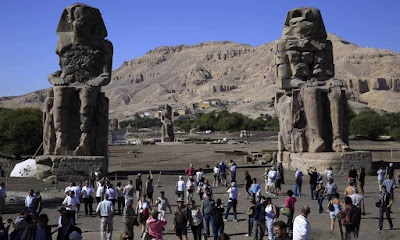Magnificent Plitvice Lakes National Park (Croatia)
Plitvice National Park In Croatia Is Considered To Be One Of The Most Beautiful Natural Sights In Europe. Due To Its Natural Beauty And Significance, This System Of 16 Interlinked Lakes And A Large Forest Complex Around It Were Set Aside As A National Park In 1949. In 1979 The Park Was Inscribed On The Unesco World Heritage List.
The Plitvice Lakes Area Has Been A Site Of Continuous Human Settlement Since Prehistory, And Today, Locals Still Inhabit Small Settlements Scattered Around The Park. Though It Is Indiscernible Today, The Lakes Have Been Constantly Modified And Changed By Humans Over The Centuries. Some Have Been Filled In To Provide Farmland, Whilst A Number Of Tributaries Have Been Diverted To Provide Water To Local Villages.
Since The Medieval Times, It Has Been An Area Of Strategic Importance Within Eastern Europe, Providing The Backdrop To Scenes Of Fierce Fighting Between The Advancing Ottomans And The Unified Austrians And Croats Of The Hapsburg Empire. The Forests Provided Much-needed Refuge For Civilians Fleeing The Violence, As Well As Being Used As A Key Frontier By The Conflicting Armies.
Somehow, The Park Escaped Relatively Unscathed By The Ravages Of Centuries Of War, And By The 19th Century, It Was Already Being Developed As A Holiday Resort, With Numerous Hotels And Restaurants Constructed By The Lakes. By The 1960’s, A Decade After The Area Was Declared A National Park With Protected Status, Tourism Was Really Booming. In 1979, It Was Officially Registered As A Unesco Site Of Outstanding Natural Beauty.
Geography Of The Park
The Plitvice Lakes National Park Is Situated About A 2-hour Drive South Of Zagreb, Close To The Bosnia-herzegovina Border. This Mountainous Area Is Known As The Dinaric Alps, A Majestic Southern European Chain Stretching From Kosovo To Slovenia. The Lakes Themselves Are Bookended Between Two Mountains – Mala Kapela At The Western End, And The Eponymous Plješevica To The East.
It Was These Mountains That Provided The Foundations For The Creation Of The Tiered Lakes Offering Such Enchanting Beauty Today. The Soft Sediment Rock Which Allowed The Lakes To Be Carved Out Is Also Largely Responsible For Their Alchemic Colour-changes. The Fluctuating Presence Of Minerals In The Water Means That Their Colour Can Vary Between Milky Blue To Bright Turquoise.
The Issue Of Protecting This Stunning National Park Has Long Been Taken Seriously, With Restrictions In Place To Safeguard The Delicate Ecosystem. This Has Allowed Plant And Animal Species To Flourish. The Beech And Fir Woodlands Are A Haven For Some Of Europe’s Most Rare Species, Including The Brown Bear And Over 100 Species Of Bird, While The Translucent Waters Of The Lakes Are Filled With Fish.
Interesting Facts About Plitvice Lakes National Park
Given The Long Human History Of The Area, Myths And Legends Have, Over Time, Sprung From Each Of The 16 Lakes. One Of The Most Popular Myths Is The Tale Of An Ancient, Magic Queen Who Was Responsible For The Creation Of The Lakes. Unsurprisingly, There Are Many Stories Surrounding The Theme Of Drowning.
The Ecology Of The Park – Having Survived Many Wars In The Past – Was Most At Risk During The Croatian War Of Independence. The Presence Of Landmines Was The Main Threat. Fortunately, By The Turn Of The Millennium, The Park Was Declared To Be Safe Once More, And Tourism Eagerly Returned.















